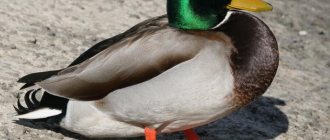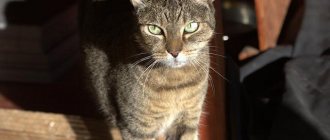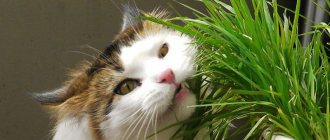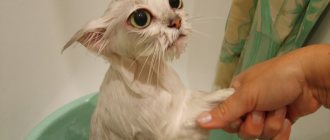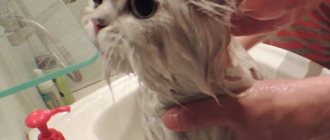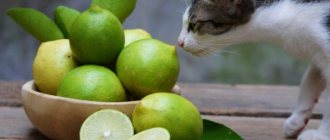- Caring for ducks
Ducks are omnivores, but this does not mean that they can be fed everything. Some foods can even be dangerous, and good intentions can turn into tragedy.
Walking near ponds, you can watch how vacationers feed ducks by throwing bread into the water. Birds that live on water in the warm season usually have enough food, which they get themselves. It is known that ducks in nature eat mainly food of plant origin.
The diet of a wild duck consists of everything that a body of water can provide it with: duckweed, algae, grass on the shore. Despite the fact that ducks in the pond preferably eat plant foods, they also willingly eat the fauna of the reservoir: fry, worms, tadpoles, mollusks, larvae. Even small fish and young frogs can become prey.
Wild birds are specially attracted to urban reservoirs because they eat mosquito larvae while collecting food from the bottom in shallow water.
Ducks on the pond
From what wild ducks eat, it is clear that the food is mainly protein and fiber. When autumn comes, grain feed will appear on the menu, which they will begin to collect from harvested fields, and that produced by wild-growing cereals.
What do ducks eat in the wild?
In the wild, wild ducks feed mainly on live food: mollusks, tadpoles and frogs, small fish, crustaceans, daphnia, insect larvae, including bloodworms (mosquito larva). They do not disdain frog and fish caviar.
In search of living food, the bird passes water through its beak, like through a sieve. In addition, she digs in the muddy bottom, funnyly lifting her tail up and plunging her head into the water. Representatives of diving species of ducks are able to dive into water to a depth of 8 m, chasing fish.
Vegetation is also present in the diet of birds. These are algae, young shoots of reeds, reeds, succulent rhizomes of coastal plants. Sometimes ducks graze along the shore - in meadows covered with lush vegetation. In autumn, flocks of birds can raid cereal crops, eating grain and seeds.
This type of nutrition does not leave ducks a chance to survive in frosty and snowy winter conditions, when water bodies freeze and the ground is covered with snow. A duck cannot dig out grass from under the snow or switch to feeding on bark, berries or dry vegetation. Therefore, in the fall, birds gather in flocks and fly away to regions with eternal summer or warm, light-snowy winters.
However, near large cities, populations of resident ducks already exist.
They take advantage of the fact that the metropolis has a milder climate, city reservoirs do not freeze completely, and residents willingly feed the ducks living in the pond.
What to feed ducks on a pond
The human desire to feed a supposedly starving bird is ineradicable. Instead of really helping the animal in harsh and hungry times, such feeding can do a lot of harm.
To really help wild birds without harming their health, you need to know what products you should take with you to feed your ducks.
Authorized Products
In zoos, visitors are often sold ready-made food for birds that winter here, which includes grain, dried insects and invertebrates, and grass pellets. Having purchased such feed, you can safely feed the ducks, helping them survive the cold.
If you can’t buy such food, you can offer the bird other available products. You can feed ducks in winter:
- hard-boiled eggs, crushing them together with the shell;
- peas or chickpeas soaked until soft;
- pieces of sunflower cake;
- pieces of meat or fish (without bones);
- whole grain corn, wheat or oats;
- herbal granules, which can be purchased at a pet store;
- pieces of fresh vegetables - pumpkin, carrots, cabbage, beets.
In winter, in severe frost, preference should be given to feed that provides a lot of energy. These are cake, grain, meat and eggs. In the spring, the vitamins that are still preserved in fresh vegetables and herbal meal are valuable for poultry.
Prohibited Products
The most common and harmful product that city dwellers feed wild ducks is bread. especially dangerous for birds, since they contain sourdough, malt and other additives. The bread crumb, once in the duck's stomach, swells and causes fermentation, which ends in indigestion or even the death of the bird.
Prohibited products include:
- chips, popcorn and other snacks;
- saltine crackers;
- sweets (chocolate, candies, marmalade).
Unfortunately, it is these harmful products that most often end up in the hands of vacationers walking around the park. Despite warning signs in places where wild birds gather, they are fed bread or cookies.
What do ducks eat in the wild?
Wild individuals consume a lot of plant foods. Birds collect duckweed from the surface of reservoirs. Aquatic grasses are the most accessible food that ducks eat, and their abundant growth occurs during the warm season.
You can’t feed wild ducks just anything.
In addition to plants, an integral part of the diet consists of snails, insect larvae, small fish, worms and other invertebrates, which abound in a river or pond.
Attention! In the cold season, the pond is not able to feed the ducks, so they happily consume what people give.
What to feed wild ducks at home
When keeping mallards or representatives of other species of wild birds at home, their diet should be as close as possible to the natural menu. The diet of these species is somewhat different from that of poultry.
Mineral supplements
Under natural conditions, the menu of wild birds includes many crustaceans and mollusks, and the duck swallows the animals along with the shell or shell. Thus, it provides the body with mineral nutrition. At home, if ducks do not have access to a natural pond, the birds are offered foods rich in calcium: shell rock, chalk, limestone, crushed eggshells.
These products should be freely available, in a separate trough. The approximate rate of feed consumption per bird is 3–6 g per day. The need for minerals increases sharply during the laying period, since with each egg laid the female’s body loses up to 1.5 g of calcium.
Vitamins and vegetables
On a home farm, you can feed wild ducks with simple and affordable vegetables:
- red and fodder carrots;
- leaf and white cabbage;
- pumpkin and zucchini;
- fodder beets (red beets are not recommended, they cause diarrhea).
Vegetables are given fresh to preserve all vitamins. For small ducklings, they are grated and mixed with grain feed. For adult livestock, it is enough to chop the vegetables into small pieces. The consumption rate depends on the age and size of the bird and ranges from 3 to 40 g.
Potatoes are not given to wild ducks because they cause obesity.
As a vitamin supplement in winter, birds are offered sprouted grain and grass meal. To germinate grain you need to do the following:
- Whole grains of wheat, barley or oats, washed from dust and husks, are placed in a wide bowl. The layer should not be thicker than 1.5 cm.
- Pour warm water over the grain until it covers the product completely. Leave in a warm place for 5 hours. The grain should swell well in water.
- The water is drained. The wet grain is covered with a cloth and left for 12–20 hours in a warm place at a temperature of 22–26 degrees.
- When white roots 5–10 mm in size appear on the seeds, the product can be fed to birds. Adults are given 3–5 g of sprouted grain per day.
Grass meal can be purchased at pet stores, where it is sold in granule form. The raw material for production is legume hay. Before giving to the ducks, the granules are crushed into powder or soaked in warm water.
Sprouted greens
Herbal granules
You can make your own herbal flour. To do this, in the summer, stinging nettle is cut and dried in the shade. The dried plants are placed in a tight bag and crushed, simply by crushing and trampling. Dry leaves crumble into flour, but rough stems can be discarded. Herbal flour is stored in paper bags in a dark and dry place. Add 1 teaspoon per head per day to mash in winter.
For large numbers of ducks, synthetic vitamins are used: premixes and water-soluble compounds (Chiktonik). The drugs are administered into the feed according to the instructions.
Grains and cereals
Wild ducks eat oats, corn, barley and wheat. It is better to give the grain steamed whole or crushed, so it is easier to digest. The daily requirement for adult birds is 30–40 g of grain feed.
In nature, ducks willingly eat the seeds of various grasses: brome, clover, meadow grasses.
In small quantities, they can be fed raw sunflower seeds or cake. Don't give roasted seeds to birds!
Meat and fish
Ducks can be given raw or boiled river fish and meat. Small fish up to 8 cm long can be thrown whole, larger ones can be chopped in a meat grinder.
The meat is given in the form of boiled minced meat. It is allowed to use minced meat and bones. It is known that ducks are good hunters; it has happened that the bird caught and ate a mouse or a baby rat.
The share of animal food in the diet should be at least 20%, and preferably 30%.
How to help ducks in winter?
In zoos, waterfowl are fed specially prepared food in winter. They include all the nutritional elements (protein, carbohydrates, fats) that ducks can get from their usual food. But compassionate townspeople continue to feed the ducks remaining for the winter with baked goods and leftover bread.
Without receiving the necessary nutrients, the bird weakens and becomes more vulnerable to cold and disease. Trying to help starving waterfowl, people often cause irreparable harm to them. What to feed ducks in winter to really help them survive severe frosts?
It is advisable not to feed baked goods to the bird. The ducks will eat, but they won’t be able to get anything but harm from such food. You can prepare high-quality food for ducks of different species overwintering on a pond yourself. Its basis can be whole grain (oats, barley, wheat) or pearl barley, oatmeal, whole grain crushed grain (corn, barley, wheat). Under no circumstances should you feed semolina and rye (rye flour) to the bird in its pure form. These feeds can be included in the grain mixture in an amount of no more than 10% of its volume.
Protein components of bird feed can be as follows:
- fish or meat waste;
- egg;
- meat, fish, bone meal;
- bone residue in the form of minced meat (sold in grocery stores);
- peas;
- sunflower, soybean, rapeseed cake or meal;
- low-fat cottage cheese.
Meat or fish waste should not contain large bones. They can be fed raw or cooked. Before feeding, the egg should be hard-boiled and chopped together with the shell.
Protein components are mixed with grain feed. Grain for ducks can be pre-boiled or steamed, but in severe frosts it is better to give it dry so that the food does not have time to freeze. Whole grains can be sprouted before feeding until green sprouts 1-2 cm long appear. This food significantly increases the content of vitamins and biologically active substances that are lacking in the winter diet of birds.
Vitamin feed for wild ducks
But what should you feed wild ducks to enrich their diet with the fiber and vitamins they need? For waterfowl wintering in urban reservoirs, the following food can be prepared:
- dried nettle, clover, alfalfa, dandelion;
- any root vegetables;
- pumpkin or zucchini;
- fresh cabbage.
In summer, dry herbs can be cut and dried in small bunches in the shade to retain more beneficial vitamins. Everything else can be grown in your personal garden or purchased specifically for poultry at the grocery store. But it is much more economical to use leftover vegetables that city residents are accustomed to throwing away. Potato peelings, carrot and beet trimmings, unnecessary leaves of white cabbage or Chinese cabbage, lettuce, yellowed dill or parsley, watermelon and melon rinds, zucchini seeds and much more will be readily eaten by ducks.
Ducks can be fed any root vegetables
Some vegetables need to be chopped before feeding. This applies to hard root vegetables and raw potatoes. Since birds do not have teeth, they will not be able to gnaw hard vegetables, and the flat beak of ducks does not allow them to peck carrots or beets. Therefore, all root vegetables with a dense structure must be grated or, raw or boiled, passed through a meat grinder. The same should be done with zucchini, pumpkin, and watermelon rind.
Leafy vegetables such as cabbage can also be given whole. The ducks do a good job of picking them off, tearing off small pieces. Dried herbs or bundles of hay are also not chopped.
As spring approaches, vegetables begin to sprout even in a cold cellar. Ducks will like young carrot or beet leaves. Trimmed tops of root vegetables or green feathers of onions and garlic will be very useful in the vitamin-poor winter diet of birds. If desired, you can specially germinate small root crops by planting them in a box with wet sand, sawdust, soil, and then feed the ducks with fresh herbs.
Mineral feeding
When preparing a winter diet for ducks, one should not forget about useful minerals. In natural conditions, it receives part of the calcium and phosphorus the bird needs from the bones of fish and frogs, shells of snails and crustaceans, which it feeds on in the pond.
It would be nice to give crushed egg shells
When artificial feeding, you can include crushed egg shells in the diet. It is also convenient to use feed chalk or shell rock (sold in pet stores). When meat and bone meal is included in the feed as a source of protein, additional mineral supplements are not necessary.
We should not forget about the special and important addition of gravel or coarse river sand for all birds. For ducks, the size of the pebbles can be about 0.5 cm. As such feeding, it is recommended to use marble chips, PGS, and natural river sand for the aquarium. Gravel for ducks can be added to the feed mixture in an amount of 5% of its volume or periodically poured into a special container. Pebbles help birds grind food in their stomachs.
Proper feeding of wild ducks in winter can be of real help to them. Having survived severe frosts, large and beautiful birds will continue to enliven the landscape of the park next summer.
Making homemade food
To make feed for wild ducks at home, you need to have a grain crusher or you will have to buy grain already crushed. A grain base is prepared for poultry by mixing the components in certain proportions. Additional additives (grass, vegetables, fish) are added to the duck mash immediately before serving.
When mixing ingredients when making feed for adult ducks, the following proportions are adhered to:
- corn - 30%;
- wheat - 10%;
- oats - 15%;
- cake - 10%;
- feed yeast - 5%;
- fish meal - 8%;
- herbal flour - 20%;
- table salt - 0.3%.
This dry food can be stored for about 3 months in a cool, dry place. The bird is given 70–100 g of feed per day, moistened with water and added vegetables and herbs.
Home feeding wild ducks
The diet of wild individuals living at home must contain a sufficient amount of animal and plant components. The list of recommended products includes:
- cereals;
- various types of flour;
- sprouted grain;
- baker's yeast;
- boiled vegetables;
- fish fillet;
- hard cheese;
- thick oatmeal;
- fresh fruits.
Cereals and legumes
Corn grain is a universal food. Yellow varieties contain more beneficial minerals. Wheat contains a lot of vitamin B. The best legumes for poultry are peas, chopped beans or beans. Oats enriched with amino acids are no less useful.
Combined mixtures
The composition of feed produced independently at home must contain the following components:
- crushed corn-wheat mixture;
- sunflower or rapeseed cake;
- peanut hulls;
- seasonal berries and fruits;
- fish waste;
- meat flour;
- crushed shells;
- feed yeast;
- greenery.
Greens are a necessary component of mixed feed.
Crushed shells contain a sufficient amount of calcium. In addition, this component helps improve digestion. Their concentration in the diet should not exceed 2%. Feed yeast is enriched with microelements and amino acids. The chemical composition of yeast is dominated by magnesium, chromium, nickel and iron. Greens are sources of vitamins E and B.
Daily consumption rate of individual components for an adult bird:
- wheat - 23 grams;
- barley - 31 grams;
- crushed peas - 12 grams;
- soybean meal - 5 grams;
- meat and bone meal - 3 grams;
- feed fat - 4 grams.
Note. The daily norms for the distribution of feed mixture depend on the size of the individuals. Particular attention should be paid to the consistency of the composition, which should not be too watery or thick.
There are ready-made combined feeds for wild ducks, which can also be used for those individuals that are going to be slaughtered. You cannot find them in every pet store, since the product is very specific. The cost also cannot be considered budgetary. Before feeding ducks, domesticated or those that have flown to the city for the winter, any ready-made mixture must first be soaked.
Diet depending on the time of year
Based on climate change throughout the year, the poultry farmer has to adjust the pet menu so that it remains complete.
Winter
Ducks spend most of this time of year indoors. They are fed grain feed with the addition of protein products (meat, fish, cottage cheese, fish and meat and bone meal). Greens are replaced with fresh vegetables and herbal flour, sprouted grains.
Complex vitamins must be added to food or water.
Spring
The spring diet does not differ from the winter one until the birds are released for walking. By eating fresh grass and being in the sun, ducks no longer need vegetables and synthetic vitamins.
Summer
In summer, ducks spend most of the day on the pond or on the run. Their diet is as close to natural as possible - the birds feed on aquatic and coastal vegetation, and they themselves forage for insects and mollusks in the water.
The poultry farmer needs to enrich the summer diet with grain feed in the amount of 50–80 g per head.
Autumn
In autumn, the bird needs to gain fat before flying to warmer climes or wintering in place. Domestic ducks don't fly anywhere, but instinct forces them to show an insatiable appetite at this time of year. The birds' diet is dominated by cereals. Ducks are fed grain mash with the addition of cake.
Feeding wild ducks in the natural environment or at home requires compliance with a number of rules aimed at maintaining the health of the bird. Birds living in a park or near a nearby body of water can be fed with grain, fresh vegetables or special grass pellets. Roasted seeds, snacks or bread should not be given.
What is this wild bird?
When describing a mallard, it is imperative to pay due attention to its external signs and sounds that it is capable of making at different times of the year. Let's start characterizing this bird with its color and size. It has quite impressive dimensions . She has a big head and a short tail. The body length of females and males ranges from fifty to sixty-five centimeters.
A sexually mature individual has a wingspan on average of eighty-five to one hundred centimeters. The length of the wings of females and drakes is different. In a female bird it can be from twenty-six to twenty-nine centimeters, and in a male bird from twenty-eight centimeters to thirty-one centimeters. A wild duck weighs a little. Its weight varies from eight hundred grams to two kilograms.
Depending on the gender of individuals, the color of the beak differs . In drakes, during the mating season, the beak is rough and colored in darker colors. In an adult, the color of the beak also varies: dark gray with an orange rim on the edges, or completely orange. Females have a distinctive feature in the form of several small spots at the end of the beak.
Mallards, like many other species of wild birds, change their plumage color according to gender during the mating season.
- Males acquire beautiful shiny plumage to attract the attention of females.
- The drake's plumage on the head takes on an emerald hue, and the neck is framed by a white collar.
- The back is brown-gray in color with minor dark inclusions. Toward the tail, the color of the feathers on the back becomes darker, and the tail is completely black. The ducks have a gray belly and a brown breast.
Interesting: How to learn to distinguish a duck from a drake
The wings of these birds also have a bright color. Gray shades predominate on top , and at the edges the gray color turns into a dark purple range. The inside of the wing is perfectly white. The tail has a small number of tail feathers, which become darker with age. The rest of the feather on the tail is gray. In summer, drakes molt and become female-like. All birds acquire a brown plumage color in the summer. But still there is one distinctive feature. You can distinguish a drake from a female by the bright color of the beak and the browner breast. The male has red legs with webbed ends.
Females, unlike males, do not change color throughout the year. The feather colors of females are dominated by brown, red and black. The entire body of females is covered with such feathers and this is the standard color for all representatives of river birds. The feathers above and below the tail are reddish-white. Their chest is golden in color and there is a light stripe above the eyes. The feet are not as bright as those of drakes. They have a pale orange color . Wild duck chicks, regardless of gender, look like their mother.
I would like to talk a little more about the sounds that birds make. As a rule, in nature this bird does not make a loud sound, but quacks quietly, without attracting attention to itself. Females quack almost like domestic ducks, and drakes do “shaaak” instead of the familiar “quack.” When the bird is alarmed, this sound becomes longer. When her voice takes off, her voice is more hasty and quiet. During mating games, the female’s voice becomes louder and she calls the male. And they, in turn, respond with a long whistle.
Interesting: Growing and breeding Indian ducks at home
